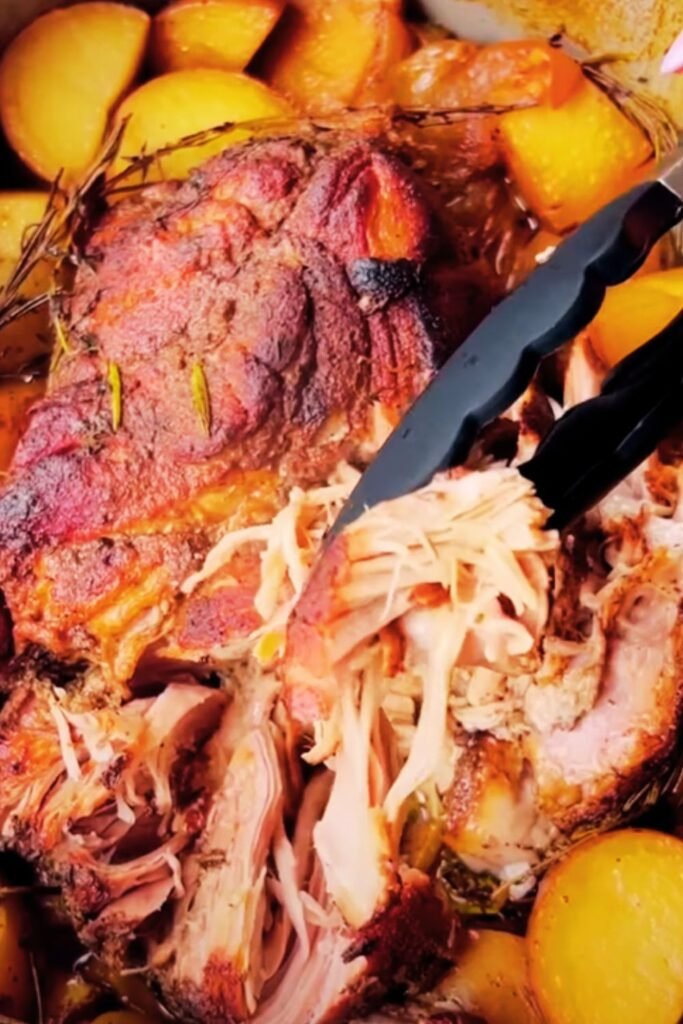There’s something magical about the way autumn flavors dance together in a single bowl. When I first discovered the combination of earthy butternut squash, savory miso paste, and warming ginger, I knew I’d stumbled upon something special. This easy miso, squash and ginger soup has become my go-to comfort food during cooler months, and I’m excited to share why it should become yours too.
The beauty of this soup lies in its perfect balance – the natural sweetness of roasted squash mingles with the deep, fermented richness of miso, while fresh ginger adds a gentle heat that warms you from the inside out. What started as an experimental fusion of Japanese and Western cooking techniques has evolved into one of my most requested recipes.
Understanding the Star Ingredients
Before we dive into the cooking process, let me walk you through the key players that make this soup extraordinary.
Miso Paste: This fermented soybean paste is the umami powerhouse of Japanese cuisine. Made by fermenting soybeans with salt and koji starter, miso develops complex flavors ranging from sweet and mild to rich and intensely salty.
Butternut Squash: This winter squash variety offers natural sweetness and creamy texture when cooked. Rich in beta-carotene, fiber, and potassium, it’s both nutritious and delicious.
Fresh Ginger: This aromatic root provides warmth and subtle spice. When fresh, ginger offers bright, zesty notes that complement both the earthiness of squash and the saltiness of miso.
Dashi or Vegetable Stock: The liquid foundation of our soup, providing depth and body to support the other flavors.
Nutritional Benefits That Matter
I love how this soup manages to be both comforting and nourishing. Let me break down the impressive nutritional profile that makes this dish a winner for both taste and health.
| Nutrient | Amount per Serving | Benefits |
|---|---|---|
| Calories | 180-220 | Moderate calorie content for satisfying meal |
| Protein | 8-12g | From miso paste and any added tofu |
| Fiber | 6-8g | Supports digestive health |
| Vitamin A | 400% DV | From beta-carotene in squash |
| Vitamin C | 35% DV | Immune system support |
| Potassium | 15% DV | Heart and muscle function |
| Sodium | 800-1200mg | Varies with miso type and amount |
The fermented nature of miso also provides probiotics, which support gut health. I find this particularly appealing since many comfort foods don’t offer such nutritional density.
Essential Equipment and Preparation
Having the right tools makes this recipe flow smoothly. Here’s what I recommend having on hand:
- Large roasting pan for the squash
- Sharp knife for clean cuts
- Vegetable peeler
- Large soup pot or Dutch oven
- Immersion blender or regular blender
- Fine-mesh strainer
- Ladle for serving

Step-by-Step Cooking Method
Preparing the Squash Foundation
I always start by roasting the butternut squash, as this develops the deep, caramelized flavors that make this soup special.
- Preheat your oven to 425°F (220°C)
- Prepare the squash: Cut the butternut squash in half lengthwise, scoop out seeds and strings
- Season generously: Brush cut surfaces with olive oil, sprinkle with salt and pepper
- Roast face-down: Place cut-side down on a baking sheet, roast for 35-45 minutes until tender
The squash is ready when you can easily pierce the flesh with a fork. The edges should be slightly caramelized, adding depth to the final soup.
Building the Flavor Base
While the squash roasts, I prepare the aromatic base that will carry all our flavors.
- Heat oil in your soup pot over medium heat
- Sauté aromatics: Add minced ginger and garlic, cook for 1-2 minutes until fragrant
- Add liquid: Pour in vegetable stock or dashi, bring to a gentle simmer
- Season lightly: Add a pinch of salt and white pepper

Combining and Blending
Once your squash has finished roasting, it’s time to bring everything together.
- Scoop the squash: Remove flesh from skin using a large spoon
- Add to pot: Transfer roasted squash to your simmering stock
- Simmer together: Let flavors meld for 10-15 minutes
- Blend smooth: Use an immersion blender to puree until completely smooth
- Strain if desired: For ultra-smooth texture, strain through fine mesh
The Miso Integration
This step requires finesse – miso paste doesn’t dissolve easily in hot liquid and can become grainy if handled roughly.
- Create miso slurry: In a small bowl, whisk miso paste with 1/4 cup of warm soup
- Whisk thoroughly: Ensure no lumps remain in the mixture
- Temper gradually: Add another 1/4 cup of soup to the miso mixture
- Combine with soup: Stir the tempered miso back into the pot
- Taste and adjust: Add more miso for deeper flavor if needed
Miso Varieties and Their Impact
The type of miso you choose dramatically affects the final flavor profile. Here’s my guide to selecting the right one:
| Miso Type | Color | Flavor Profile | Best Use in This Soup |
|---|---|---|---|
| White (Shiro) | Pale yellow | Sweet, mild, delicate | Light, elegant version |
| Yellow (Shinsu) | Golden | Balanced, medium saltiness | All-purpose choice |
| Red (Aka) | Dark brown | Rich, salty, intense | Bold, hearty version |
| Mixed | Varies | Complex, layered | Gourmet variation |
I typically reach for yellow miso as my default choice – it provides excellent umami depth without overwhelming the squash’s natural sweetness.
Serving Suggestions and Garnishes
The beauty of this soup lies not just in its flavor, but in how you can customize it for different occasions and preferences.
Traditional Garnishes
- Thinly sliced green onions
- Toasted sesame seeds
- Cubed silken tofu
- Crispy fried shallots
- Fresh cilantro leaves
Creative Additions
- Roasted pumpkin seeds
- Coconut cream swirl
- Pickled ginger slices
- Crushed nori sheets
- Chili oil drizzle

Accompaniment Ideas
- Crusty sourdough bread
- Steamed jasmine rice
- Asian-style cucumber salad
- Gyoza or potstickers
- Simple green salad with sesame dressing
Storage and Meal Prep Strategies
This soup is fantastic for meal preparation and actually improves in flavor after a day or two in the refrigerator.
| Storage Method | Duration | Notes |
|---|---|---|
| Refrigerator | 4-5 days | Store in airtight container |
| Freezer | 3 months | Freeze in portions for easy reheating |
| Room Temperature | 2 hours max | Don’t leave out longer than this |
Reheating Tips
- Stovetop: Gentle heat, stir frequently
- Microwave: Use 50% power, stir every minute
- Add liquid: Thin with stock if needed after storage
Troubleshooting Common Issues
Even with the best intentions, sometimes things don’t go perfectly. Here are solutions to the most common problems I’ve encountered:
Soup too thick: Gradually add warm vegetable stock until desired consistency is reached
Soup too thin: Simmer uncovered to reduce, or blend in additional roasted squash
Grainy texture: Strain through fine mesh, or blend longer for smoother consistency
Too salty: Add coconut milk or cream to balance, or dilute with additional stock
Lacking depth: Increase miso paste gradually, or add a splash of rice vinegar
Seasonal Variations and Adaptations
One reason I love this recipe is how adaptable it is throughout the year and for different dietary needs.
Seasonal Modifications
- Spring: Add fresh peas and mint
- Summer: Serve chilled with cucumber garnish
- Fall: Include roasted apple pieces
- Winter: Add warming spices like cinnamon
Dietary Adaptations
- Vegan: Use vegetable stock instead of dashi
- Low-sodium: Reduce miso quantity, increase other seasonings
- Protein boost: Add cubed tofu or edamame
- Creamy version: Stir in coconut milk before serving
Advanced Techniques for Flavor Enhancement
For those wanting to elevate this soup to restaurant quality, here are some professional techniques I’ve learned:
Roasting Enhancement
Instead of simply roasting the squash, try these methods:
- Brush with miso glaze before roasting
- Add aromatics like thyme or rosemary to the pan
- Roast at higher temperature (450°F) for more caramelization
Stock Improvements
- Make your own dashi with kombu and bonito flakes
- Roast vegetables for stock base
- Add mushrooms for deeper umami notes
Final Touches
- Finish with a small amount of mirin for subtle sweetness
- Add white pepper for gentle heat
- Drizzle with sesame oil just before serving
Frequently Asked Questions
Q: Can I make this soup without roasting the squash first? I don’t recommend skipping the roasting step. Roasting develops deep, caramelized flavors that simply can’t be achieved by boiling or steaming. The extra time is worth the significant improvement in taste.
Q: What’s the best substitute for miso paste if I can’t find it? While nothing exactly replicates miso’s unique flavor, you can try a combination of soy sauce and tahini, or use vegetable bouillon paste. However, I strongly encourage seeking out miso paste – it’s increasingly available in regular supermarkets and the flavor difference is substantial.
Q: How do I know when the squash is properly roasted? The squash is ready when you can easily pierce it with a fork and the edges show some caramelization. The flesh should be tender throughout, and the cut surfaces should have a slightly golden color.
Q: Can I use other types of winter squash? Absolutely! Delicata, acorn, or kabocha squash all work wonderfully. Each brings its own subtle flavor differences – kabocha is particularly sweet, while acorn squash offers a slightly nuttier taste.
Q: Is this soup suitable for freezing? Yes, this soup freezes beautifully for up to three months. I recommend freezing in individual portions for easy reheating. The texture may change slightly after freezing, but the flavor remains excellent.
Q: How can I make this soup more filling? Add protein like cubed tofu, cooked chicken, or beans. You can also serve over steamed rice or add cooked noodles directly to the soup for a heartier meal.
Q: What should I do if my soup tastes too salty? The saltiness usually comes from the miso paste. Balance it by adding a splash of rice vinegar, a small amount of sugar, or diluting with additional vegetable stock. Coconut milk also helps mellow saltiness while adding richness.
Q: Can I prepare any components ahead of time? Yes! Roast the squash up to two days ahead and store in the refrigerator. You can also make the entire soup base without the miso, then add the miso when reheating to serve.
This miso, squash and ginger soup represents everything I love about fusion cooking – it takes the best elements from different culinary traditions and creates something both familiar and exciting. The combination of Japanese umami depth with Western comfort food sensibilities results in a bowl that satisfies on multiple levels.
Whether you’re seeking a cozy weeknight dinner, an elegant starter for entertaining, or a nourishing meal prep option, this soup delivers. The natural sweetness of roasted squash, the complex salinity of miso, and the warming heat of ginger create a harmony that never gets old.
I encourage you to make this recipe your own by experimenting with different miso varieties, seasonal garnishes, and personal touches. The foundation is solid enough to support creativity while being simple enough for confident home cooks to master. Start with this version, then let your taste preferences guide you toward your perfect bowl.